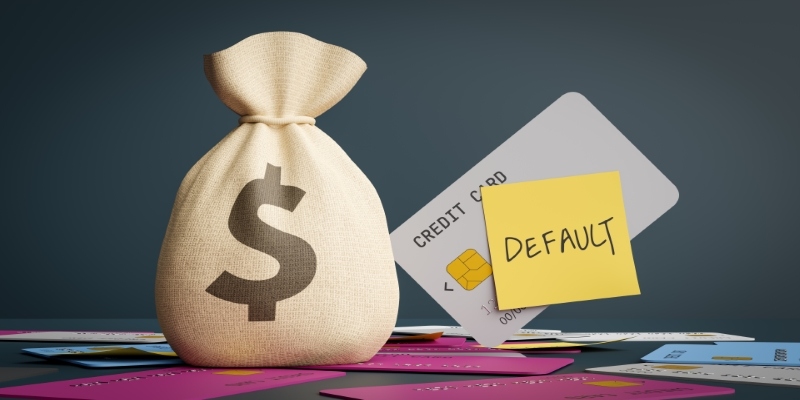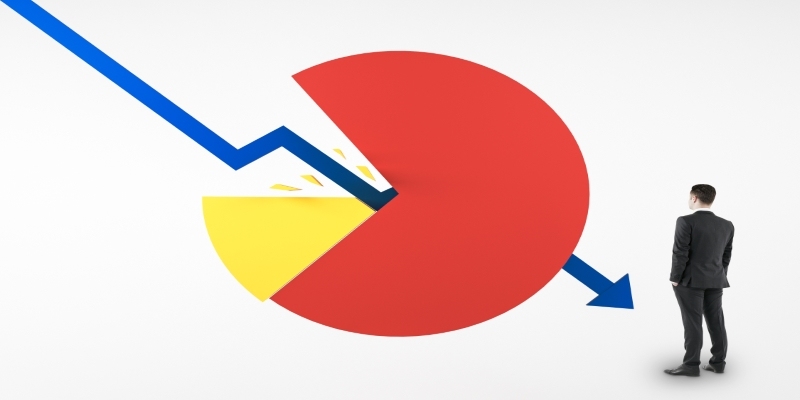Demystifying Financial Terms: A Guide to Insolvency, Default, and Bankruptcy
Jan 18, 2024 By Triston Martin
Welcome to the complex world of financial terminology, where terms like Insolvency, default, and Bankruptcy often swirl together, creating confusion. In this article, we'll unravel the intricacies of these terms, providing simplified explanations to help you navigate the often-murky waters of financial distress.
Understanding Insolvency: A Closer Look
Facing an inability to repay debt poses a significant challenge. Dealing with Insolvency involves various strategies, such as restructuring debt or adjusting cash flows. Insolvency manifests in two forms: cash-flow Insolvency and balance-sheet Insolvency. The latter occurs when debt surpasses assets, while cash flow insolvency arises when a debtor lacks the means to repay.
The impediment intensifies when the debtor struggles to meet dues, potentially leading to severe consequences. For instance, a homeowner failing to pay mortgage installments may face foreclosure, resulting in default. Insolvency signifies a financial warning, indicating a need for adjustments to avert more severe troubles for businesses or individuals; acknowledging the signs early becomes paramount.
Default: The Crossroads of Financial Obligations
Default happens when a borrower can't stick to the rules of a loan or money agreement. It's similar to not paying your credit card on time or missing mortgage payments. This slip-up can lead to severe outcomes, like a drop in your credit score and extra fees.
Knowing about default is essential for both borrowers and lenders. For borrowers, it's a warning sign of financial problems, and for lenders, it sets off a chain of events, including penalties or legal actions. Spotting the chance of default early gives room for taking action to stop more financial issues from happening. Understanding these basics is like having a roadmap to steer clear of financial potholes.

Bankruptcy: The Last Resort
"Bankruptcy, rooted in 'bancus' and 'ruptus,' Latin for 'bench or table' and 'broken,' is a final recourse when settling debts proves futile. In this scenario, a company admits Insolvency through legal intervention. It comes in two forms: reorganization, restructuring debts, and liquidation, selling assets to meet obligations.
Initiating via debtor's petition or court-issued sequestration order, Bankruptcy signifies a legal recognition that financial challenges demand decisive measures, like reorganization or liquidation, for debt resolution and recovery."
Comparing Insolvency, Default, and Bankruptcy
While these terms share the common thread of financial distress, their severity and implications differ. They are insolvent due to insufficient money to pay their creditors back. Any individual or company that can pay its debts is considered solvent; otherwise, the term "insolvency" would not be applicable. You are referred to as insolvent if you are unable to make payments.
Default signals a breach in financial agreements, typically ushering in more severe consequences. When someone defaults, they've fallen short of fulfilling the terms of a loan or financial arrangement.
It's akin to missing a credit card payment or failing to meet mortgage obligations. The ultimate form of Insolvency is called Bankruptcy. Declaring oneself bankrupt indicates one's incapacity to repay debts. It's simply a term used to describe a person or business ruled bankrupt by a court.
Increasing cash inflows and optimizing the debt structure are two ways to overcome Insolvency. Until one's assets and liabilities surpass their ability to repay debt, they are considered insolvent for a specified time. So, Insolvency is not permanent.
Resolving a default condition requires a strategic and proactive approach to address the underlying financial issues. Resolving a default condition is a gradual process that requires commitment and effort. Open communication, financial planning, and seeking professional guidance are critical to overcoming default and working toward financial stability.
Bankruptcy has no answers. For example, a company that cannot pay its daily expenses due to poor sales and cash inflows can still find a way to remedy the problem.
Experiencing insolvency results in declining credit ratings, creating hurdles for obtaining new credit. Defaulting on financial obligations signals financial instability, causing damage to credit scores. This, in turn, results in elevated future loan rates and restricted access to credit.
The most severe impact, however, is associated with Bankruptcy, indicating an inability to fulfill obligations and leading to a substantial drop in credit scores. Acquiring new credit becomes exceptionally challenging after Bankruptcy, and the record of existing debts may persist on credit reports for an extended period.

Steps Toward Financial Recovery
Navigating financial recovery from Insolvency, default, and Bankruptcy involves strategic steps tailored to each situation: Analyse the underlying causes and the particular economic issues. Talk to lenders or creditors about workable options. For well-informed tactics, consult credit counselors or financial consultants.
Negotiate repayment plans or debt restructuring agreements. Thoroughly examine and adjust your budget to manage expenses. Establish a financial safety net to prevent future crises. Regularly monitor credit reports for accuracy and progress. Explore options to consolidate debts for easier management.
Consider legal advice for bankruptcy proceedings or negotiations. Adopt responsible financial practices to rebuild credit gradually. Remember, recovery is gradual, and seeking professional advice is essential. Tailor these steps to your unique circumstances for a sustainable financial journey.
Conclusion:
As we conclude our exploration of Insolvency, default, and Bankruptcy, remember that these intertwined terms carry distinct meanings. Insolvency is the early warning, default is the breach, and Bankruptcy is the last resort. Whether you're a business owner or an individual managing personal finances, being well-informed about these terms empowers you to make sound decisions in the face of financial challenges.
In the vast sea of financial terms, understanding these concepts is like having a compass to navigate through stormy weather. So, as you venture into the world of finance, armed with knowledge, may you weather any financial turbulence that comes your way.

Investing In Vegan Stocks: A Sustainable Choice for Your Portfolio
By Triston Martin / Nov 07, 2023
Want to explore the world of vegan stocks and discover why investing in them can be a smart and sustainable choice? Learn about the benefits, risks, and how to get started in this growing market.

What is Negative Income Tax
By Susan Kelly / Nov 21, 2023
The government gives low-income families tax credits through the Negative Income Tax. Read more about it along with its challenges and benefits.

The Impact of Modernizing the Alcohol Tax: An Economic Perspective
By Susan Kelly / Jan 17, 2024
Explore the multifaceted impact of modernizing alcohol tax on industry dynamics, consumer behavior, public health, and government revenue. A comprehensive guide on a complex issue.

Decoding Accidental Death and Dismemberment (AD and D) Insurance: A Layman's Guide
By Triston Martin / Dec 20, 2023
Uncover the essentials of Accidental Death and Dismemberment (AD and D) Insurance in this straightforward guide. Learn how AD and D works, its advantages and disadvantages, and common exclusions. Navigate the insurance landscape with this spartan overview.

Way to Park Your Cash Efficiently
By Triston Martin / Feb 10, 2024
Parked cash can challenge investors, but many options are available for parking your cash efficiently. Potential options include high-yield savings accounts, short-term CDs, treasury securities, municipal bonds, money market funds, peer-to-peer lending, REITs, and robo-advisors. Understanding your goals, time horizon, and risk tolerance is important before choosing an investment option

Unveiling Compound Interest: Maximizing Returns through Growth
By Susan Kelly / Feb 27, 2024
How do you figure out compound interest? shows how compound interest works. Everyone now knows what compound interest is. Compound interest makes money grow and cuts down on debt.

First-Time Home Buyers
By Susan Kelly / Oct 11, 2023
The first time a person purchases a home may be a very exciting occasion. However, there will be many new procedures for you to go through and new personnel with whom you will need to collaborate. Here are some of the best advice for first-time homebuyers to assist them through the whole process, from beginning to end.

Cash Requirements for Closing Costs in South Carolina
By Triston Martin / Mar 13, 2024
Understand the cash needed for closing costs in South Carolina. Essential insights for budgeting your home purchase.

In-Depth Analysis: Caliber Home Loans Mortgage
By Triston Martin / Jan 13, 2024
Your guide to understanding Caliber Home Loans' mortgage offerings, with insights on rates, pros and cons.

How Does the Exclusion Work?
By Triston Martin / Dec 07, 2023
If you sell your principal house, you will likely not be subject to a significant capital gains tax. As of the tax year 2021, unmarried taxpayers who file a separate return may deduct up to $250,000 in capital gains on the sale of their principal homes, while married taxpayers who file a joint return can exclude up to $500,000 in capital gains.

Decoding Tax Season: A Comprehensive Guide to Smart Tax Filing
By Triston Martin / Nov 25, 2023
Explore essential considerations for a stress-free tax season. Learn about tax planning, deductions, and crucial factors before filing your taxes.

The Stealthy Rise: 10 Things That Are SILENTLY Increasing The Cost Of Living
By Susan Kelly / Jan 18, 2024
Explore the undercover forces that quietly escalate the cost of living. From hidden taxes to sneaky fees, discover the silent culprits affecting your budget